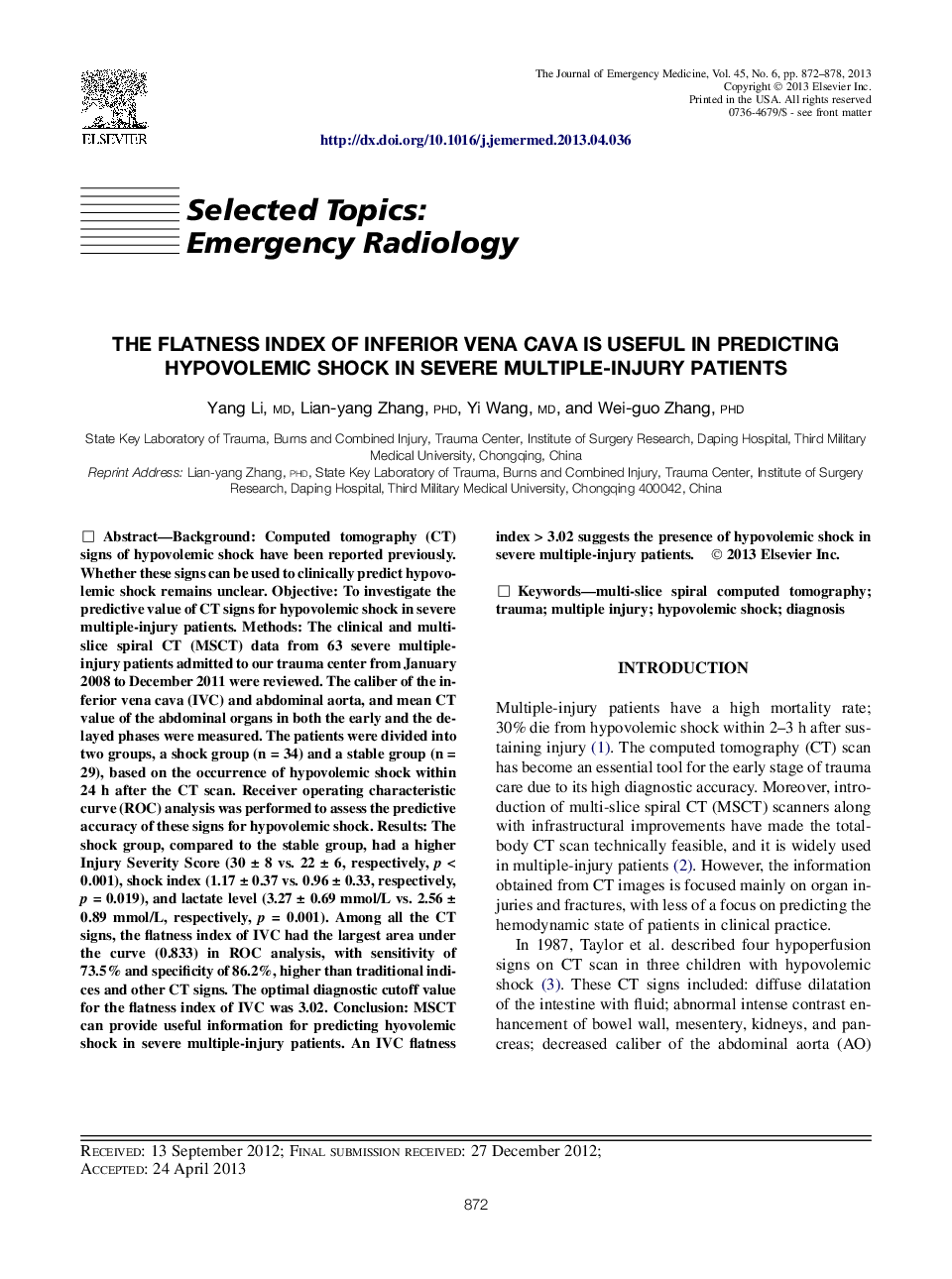| Article ID | Journal | Published Year | Pages | File Type |
|---|---|---|---|---|
| 3246508 | The Journal of Emergency Medicine | 2013 | 7 Pages |
BackgroundComputed tomography (CT) signs of hypovolemic shock have been reported previously. Whether these signs can be used to clinically predict hypovolemic shock remains unclear.ObjectiveTo investigate the predictive value of CT signs for hypovolemic shock in severe multiple-injury patients.MethodsThe clinical and multi-slice spiral CT (MSCT) data from 63 severe multiple-injury patients admitted to our trauma center from January 2008 to December 2011 were reviewed. The caliber of the inferior vena cava (IVC) and abdominal aorta, and mean CT value of the abdominal organs in both the early and the delayed phases were measured. The patients were divided into two groups, a shock group (n = 34) and a stable group (n = 29), based on the occurrence of hypovolemic shock within 24 h after the CT scan. Receiver operating characteristic curve (ROC) analysis was performed to assess the predictive accuracy of these signs for hypovolemic shock.ResultsThe shock group, compared to the stable group, had a higher Injury Severity Score (30 ± 8 vs. 22 ± 6, respectively, p < 0.001), shock index (1.17 ± 0.37 vs. 0.96 ± 0.33, respectively, p = 0.019), and lactate level (3.27 ± 0.69 mmol/L vs. 2.56 ± 0.89 mmol/L, respectively, p = 0.001). Among all the CT signs, the flatness index of IVC had the largest area under the curve (0.833) in ROC analysis, with sensitivity of 73.5% and specificity of 86.2%, higher than traditional indices and other CT signs. The optimal diagnostic cutoff value for the flatness index of IVC was 3.02.ConclusionMSCT can provide useful information for predicting hyovolemic shock in severe multiple-injury patients. An IVC flatness index > 3.02 suggests the presence of hypovolemic shock in severe multiple-injury patients.
